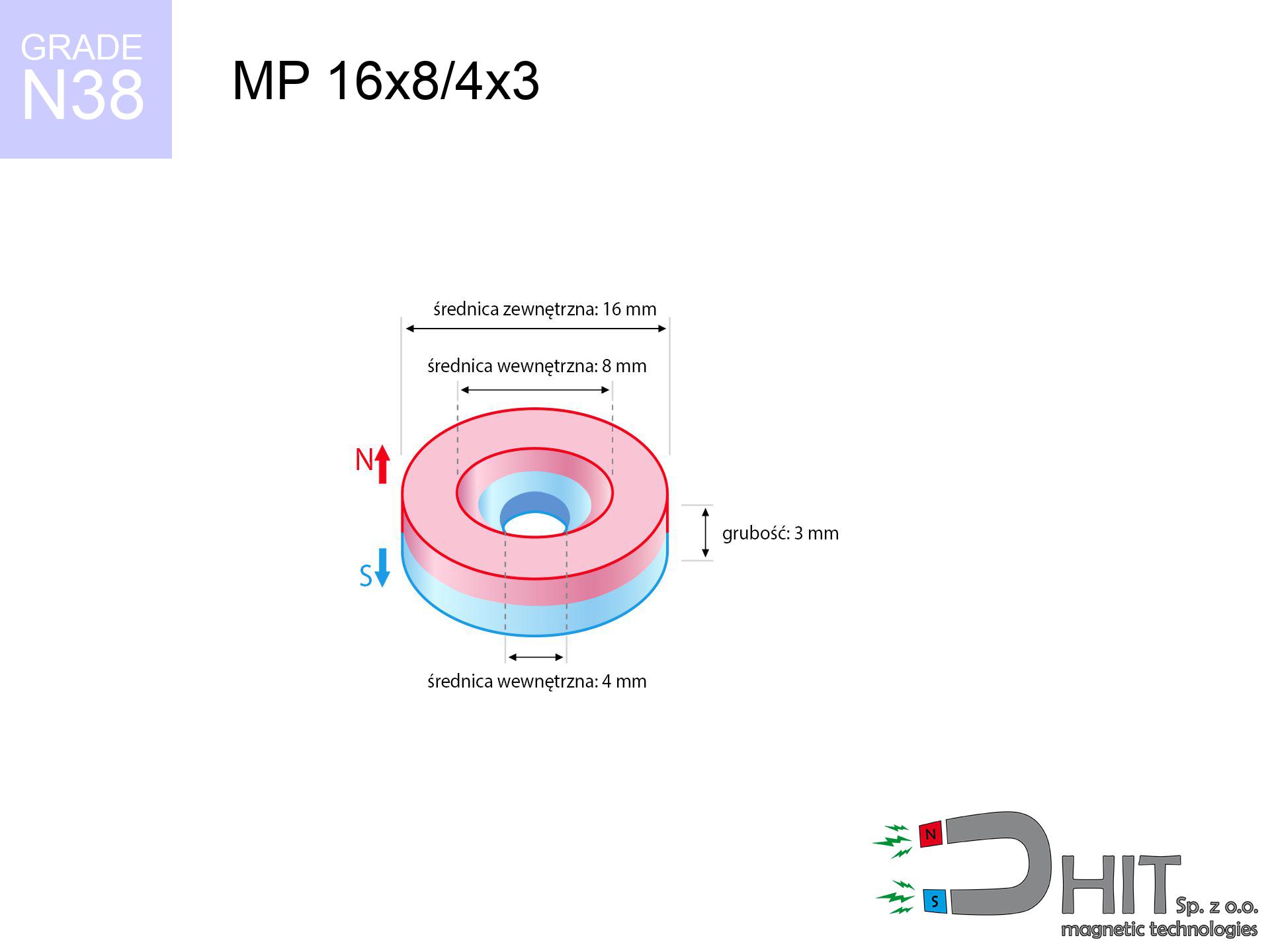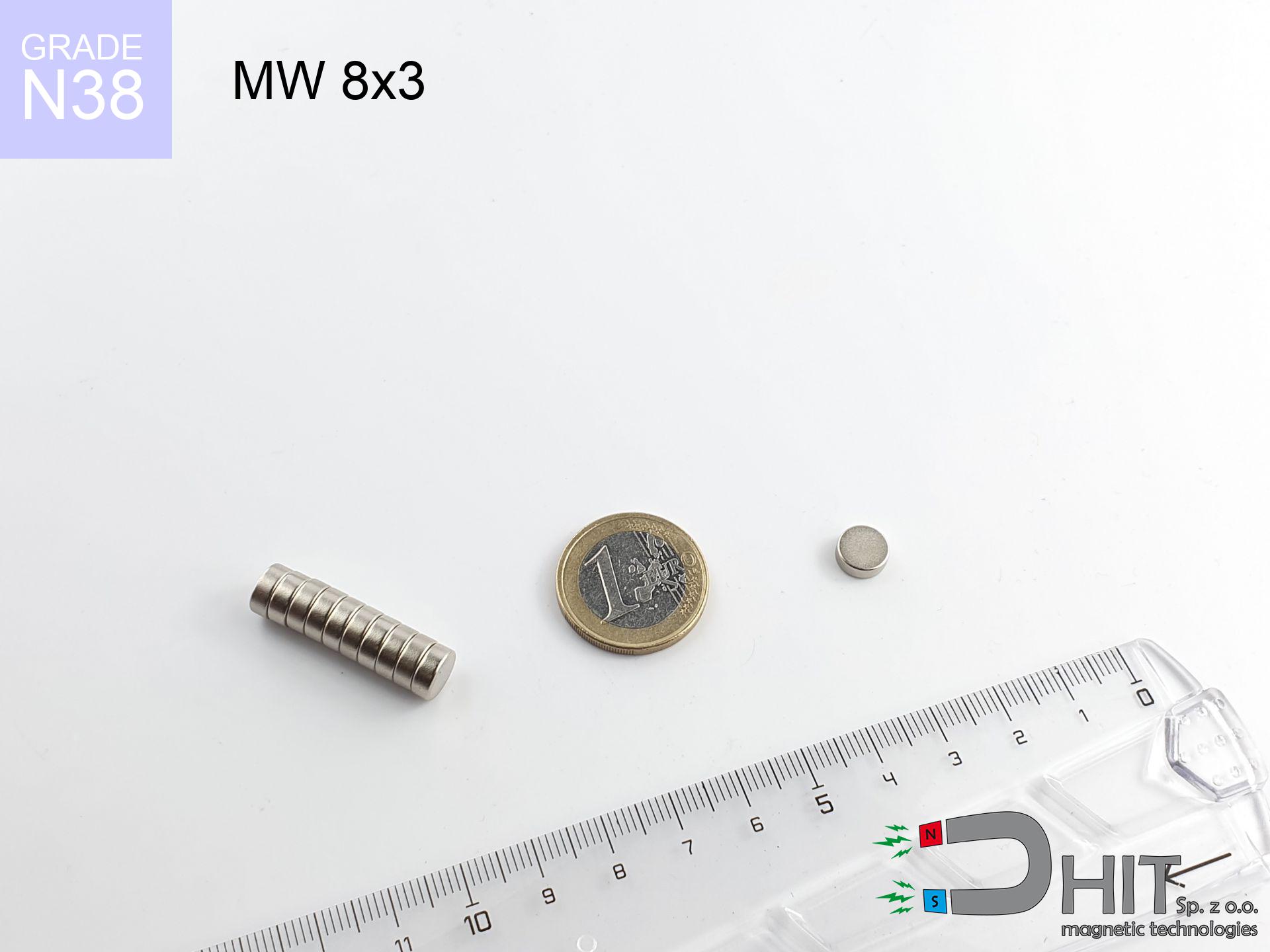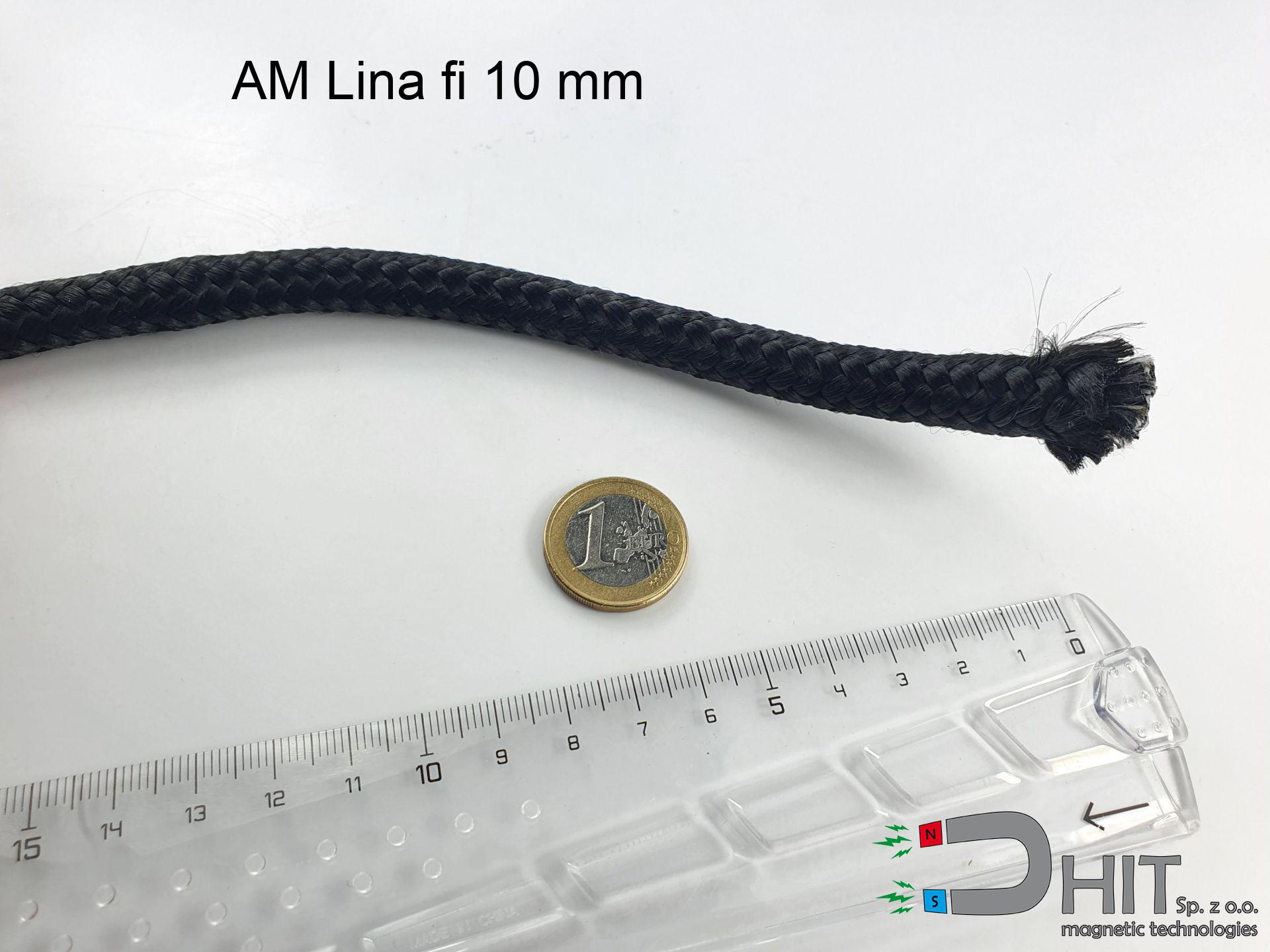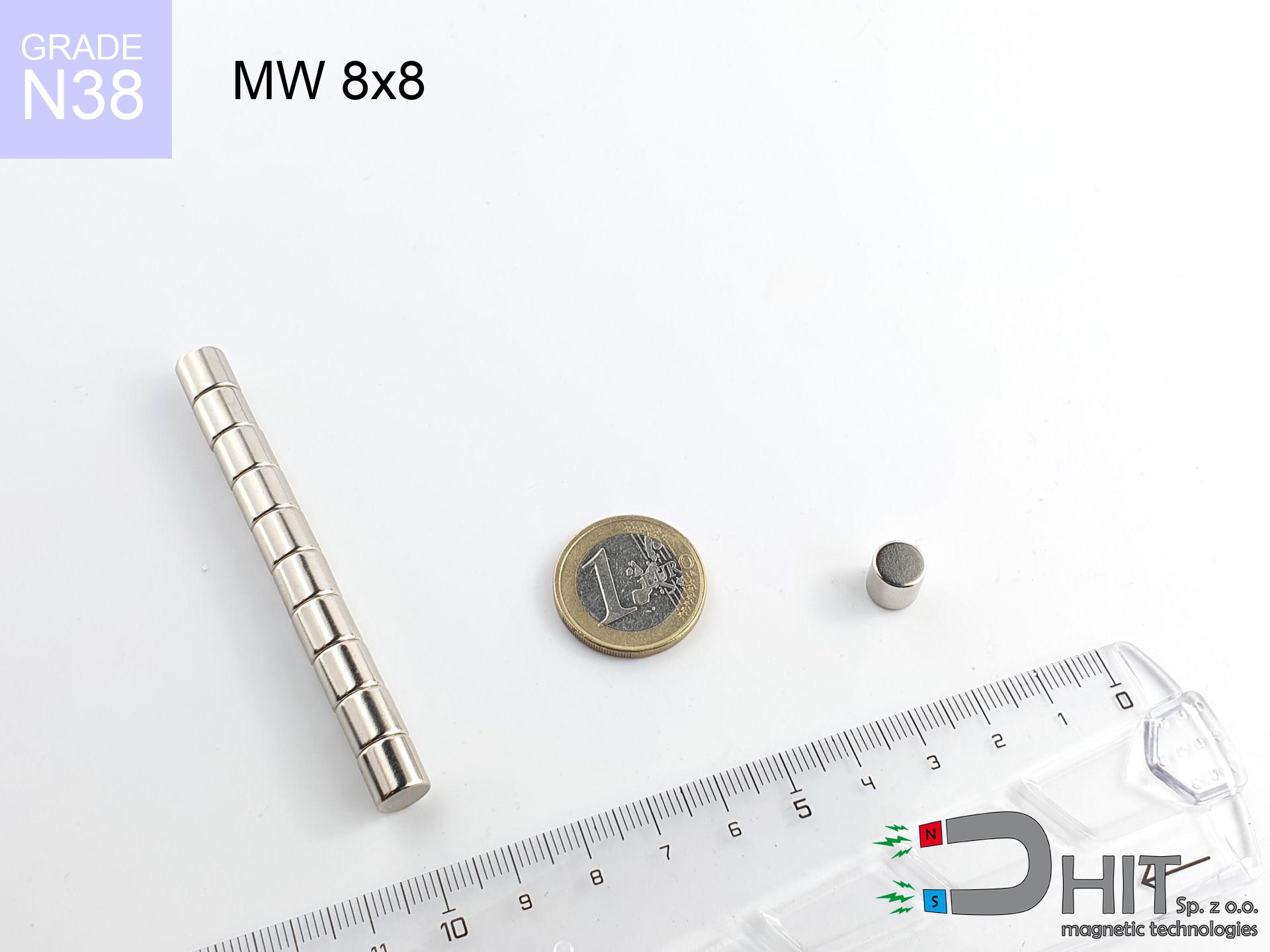MP 16x8/4x3 / N38 - ring magnet
ring magnet
Catalog no 030396
GTIN: 5906301812333
Diameter
16 mm [±0,1 mm]
internal diameter Ø
8/4 mm [±0,1 mm]
Height
3 mm [±0,1 mm]
Weight
7.07 g
Magnetization Direction
↑ axial
Load capacity
0.7 kg / 6.86 N
Magnetic Induction
296.67 mT
Coating
[NiCuNi] nickel
2.50 ZŁ with VAT / pcs + price for transport
2.03 ZŁ net + 23% VAT / pcs
bulk discounts:
Need more?Need help making a decision?
Call us now
+48 22 499 98 98
otherwise drop us a message by means of
contact form
the contact form page.
Weight along with form of a magnet can be checked on our
online calculation tool.
Order by 14:00 and we’ll ship today!
Magnetic properties of material N38
Physical properties of sintered neodymium magnets Nd2Fe14B at 20°C
Shopping tips
Advantages and disadvantages of neodymium magnets.
Besides their immense magnetic power, neodymium magnets offer the following advantages:
- They retain full power for nearly ten years – the loss is just ~1% (based on simulations),
- They maintain their magnetic properties even under close interference source,
- Thanks to the shimmering finish, the coating of Ni-Cu-Ni, gold, or silver-plated gives an elegant appearance,
- They are known for high magnetic induction at the operating surface, making them more effective,
- Through (appropriate) combination of ingredients, they can achieve high thermal strength, enabling functioning at temperatures approaching 230°C and above...
- Possibility of individual modeling and adapting to atypical needs,
- Significant place in future technologies – they are utilized in data components, brushless drives, diagnostic systems, as well as complex engineering applications.
- Compactness – despite small sizes they generate large force, making them ideal for precision applications
Disadvantages of neodymium magnets:
- At very strong impacts they can crack, therefore we advise placing them in special holders. A metal housing provides additional protection against damage, as well as increases the magnet's durability.
- NdFeB magnets lose power when exposed to high temperatures. After reaching 80°C, many of them experience permanent weakening of strength (a factor is the shape as well as dimensions of the magnet). We offer magnets specially adapted to work at temperatures up to 230°C marked [AH], which are very resistant to heat
- Due to the susceptibility of magnets to corrosion in a humid environment, we recommend using waterproof magnets made of rubber, plastic or other material immune to moisture, in case of application outdoors
- Limited possibility of making threads in the magnet and complicated forms - preferred is casing - magnet mounting.
- Potential hazard related to microscopic parts of magnets pose a threat, in case of ingestion, which becomes key in the context of child health protection. Furthermore, small elements of these devices are able to be problematic in diagnostics medical when they are in the body.
- Due to neodymium price, their price is higher than average,
Detachment force of the magnet in optimal conditions – what contributes to it?
Magnet power is the result of a measurement for optimal configuration, taking into account:
- on a block made of structural steel, effectively closing the magnetic flux
- possessing a massiveness of minimum 10 mm to avoid saturation
- with a plane cleaned and smooth
- with zero gap (without impurities)
- for force applied at a right angle (in the magnet axis)
- at conditions approx. 20°C
Practical lifting capacity: influencing factors
Effective lifting capacity impacted by working environment parameters, such as (from most important):
- Air gap (between the magnet and the plate), as even a microscopic clearance (e.g. 0.5 mm) results in a decrease in lifting capacity by up to 50% (this also applies to varnish, corrosion or debris).
- Angle of force application – highest force is obtained only during perpendicular pulling. The force required to slide of the magnet along the surface is usually several times smaller (approx. 1/5 of the lifting capacity).
- Plate thickness – insufficiently thick plate causes magnetic saturation, causing part of the flux to be lost into the air.
- Chemical composition of the base – mild steel gives the best results. Alloy admixtures reduce magnetic properties and holding force.
- Smoothness – full contact is obtained only on smooth steel. Rough texture create air cushions, weakening the magnet.
- Temperature influence – hot environment reduces pulling force. Exceeding the limit temperature can permanently demagnetize the magnet.
* Holding force was tested on a smooth steel plate of 20 mm thickness, when a perpendicular force was applied, however under parallel forces the load capacity is reduced by as much as fivefold. In addition, even a slight gap {between} the magnet’s surface and the plate decreases the load capacity.
Safe handling of NdFeB magnets
Compass and GPS
Navigation devices and mobile phones are extremely sensitive to magnetism. Direct contact with a strong magnet can permanently damage the internal compass in your phone.
Combustion hazard
Dust produced during machining of magnets is combustible. Do not drill into magnets without proper cooling and knowledge.
Material brittleness
Despite metallic appearance, neodymium is delicate and cannot withstand shocks. Do not hit, as the magnet may shatter into sharp, dangerous pieces.
Bodily injuries
Pinching hazard: The pulling power is so great that it can cause blood blisters, pinching, and even bone fractures. Protective gloves are recommended.
Implant safety
For implant holders: Strong magnetic fields affect electronics. Keep at least 30 cm distance or ask another person to work with the magnets.
Swallowing risk
NdFeB magnets are not suitable for play. Eating a few magnets may result in them connecting inside the digestive tract, which constitutes a direct threat to life and requires immediate surgery.
Heat sensitivity
Control the heat. Exposing the magnet to high heat will permanently weaken its magnetic structure and pulling force.
Handling guide
Be careful. Rare earth magnets act from a long distance and connect with massive power, often faster than you can react.
Skin irritation risks
Allergy Notice: The nickel-copper-nickel coating contains nickel. If an allergic reaction appears, cease working with magnets and use protective gear.
Keep away from computers
Intense magnetic fields can corrupt files on payment cards, hard drives, and other magnetic media. Maintain a gap of min. 10 cm.
Attention!
Want to know more? Check our post: Why are neodymium magnets dangerous?



![UMH 60x15x69 [M8] / N38 - magnetic holder with hook UMH 60x15x69 [M8] / N38 - magnetic holder with hook](https://cdn3.dhit.pl/graphics/products/umh-60x15x69-m8-nij.jpg)




